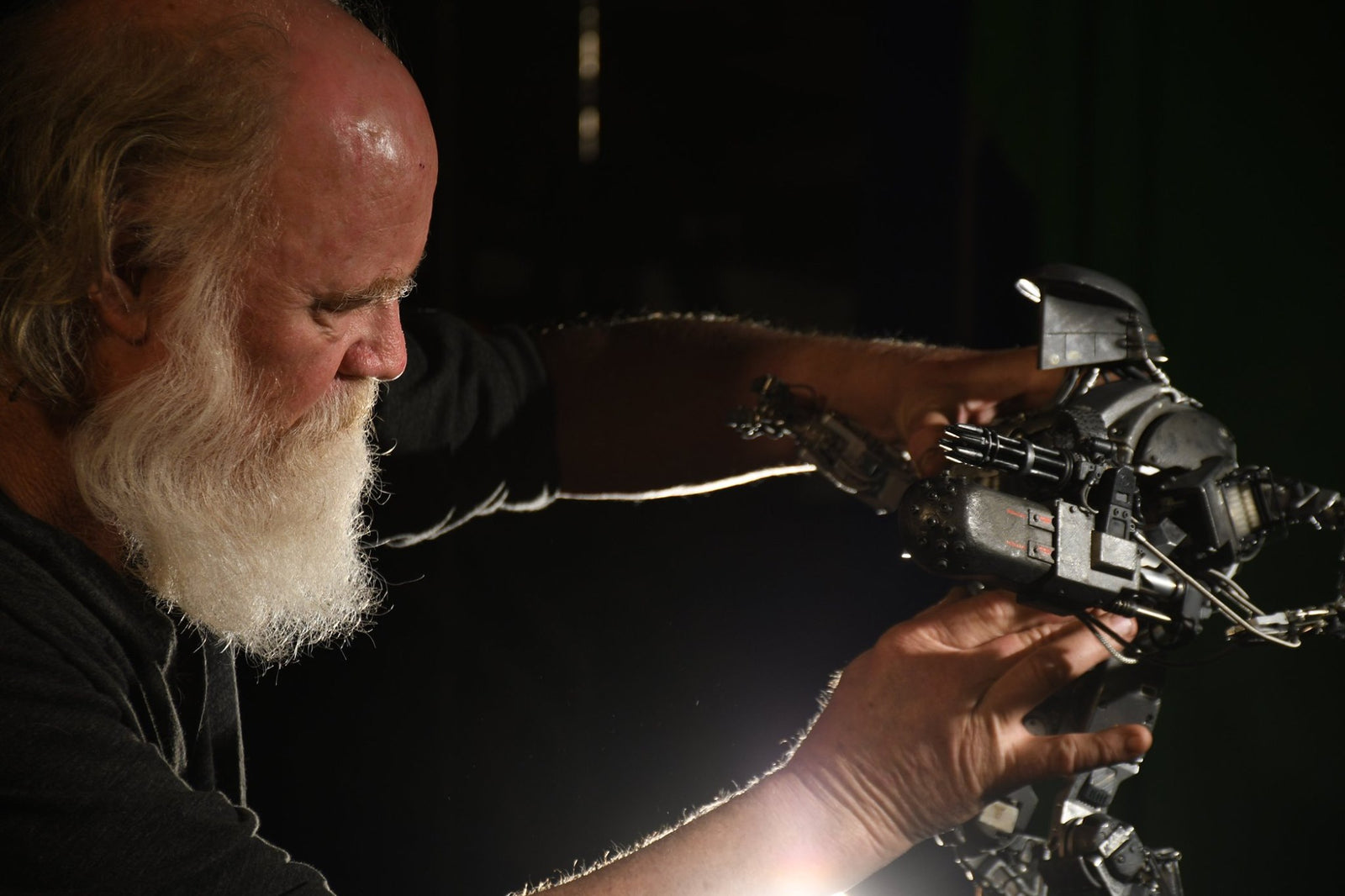Your Cart is Empty
Artists

The Hand Crafted World of "Phil Tippett: Mad Dreams and Monsters"
July 15, 2021 3 min read 0 Comments
As I write this I have an assortment of model kits scattered across my desk, mainly power-armor and mechs which I paint and fiddle with when I’m supposed to be writing. This is a minor attempt at recreating the might and majesty of stop motion creations I saw in movies as a kid, such as the striding colossal AT-AT walkers in The Empire Strikes Back or the fearsome ED-209 from Robocop. Phil Tippett helped breathe life into those creations and so many more throughout his decades in the film industry, and the documentary Phil Tippett: Mad Dreams and Monsters examines his illustrious career that began with clay and armatures and reverberated into the digital effects of today.
Directed by Gilles Penso and Alexandre Poncet, who previously worked on the documentary Creature Designers The Frankenstein Complex, Mad Dreams features interviews with Phil, along with his peers and collaborators such Jules Roman, Joe Dante, Paul Veerhoven and Denis Muren. The overview of Phil’s career from low budget B movies to Hollywood blockbusters acts as a parallel of the growth of the special effects industry over time and how tinkering in garages can grow to pushing the boundaries of technology. Despite stop motion being a lengthy process (though Tippet balks at calling it “tedious”) there is an improvisational spark in Tippet’s creations, and how he makes changes on the fly. Tippett’s fascination with dinosaurs helped make ED-209 seem like an animal rather than a machine (and led to Veerhoven calling Tippett a genius).
While Mad Dreams definitely does have some pining for the old days of special effects, it doesn’t fall back on the idea that the methods of Phil Tippett and animators of his generation are dead and simply replaced by CGI. The film posits that the work of Phil Tippet laid the foundation for digital animation through his work on Jurassic Park and his adoption of new technology. Phil’s experience creating stop motion dinosaurs and rubber piranhas for Joe Dante gave him intrinsic knowledge of how creatures move and distribute their weight and this knowledge was vital to the animation of Jurassic Park’s dinosaurs. CG wasn’t an intrusive element in cinema, it was something that grew out of the artisans that came before it.
At just shy of 90 minutes Mad Dreams is lean, to the point, and doesn’t waste any time, but because of that we don’t get too much of Phil beyond the cinematic achievements. There are mentions His bouts with depression and fatigue after his projects, the hard work of his wife Jules Roman, his world view that leads to projects like Mad God and Prehistoric Beasts, and his place in a constantly changing industry, but just before we can do more than scratch the surface of these subjects, the documentary has already moved on. There is a lingering hint of pathos that we only get the slightest grasp of. If you’ve watched as many behind the scenes special features on DVD/Blu Ray as I have, these documentaries about the men behind classic special effects start to run together a bit, and at a certain point Mad Dreams feels like a well made one of those.
In all the films that are covered in this documentary, Mad God truly stuck out. A short film that Tippett has worked on on and off over the years, Mad God has an aesthetic akin to Mad Max meets Hieronymus Bosch. This is one of the few personal projects and directorial efforts from Tippett covered in the documentary. Tippett briefly mentions how Mad God is about the absurdity of life and the powers that be, but that taste is all we get of. Perhaps Phil is being guarded and wants his work to speak for itself.
Phil Tippett says “I don’t think in terms of a legacy”, and this is echoed in the way he kinda matter of factly states how some people see his creations as legendary. Phil doesn’t have the fanboy-ish reverence that others possess for his work and is always thinking about how to move forward. When asked about the many artifacts, masks, dolls, and creatures decorating his home, Tippett describes it as an “ambiance”. “It’s not so much inspiration, it’s more like having an ambience. I think things talk to you, even when you’re not listening.” Phil Tippett picks up on the voices of creature bones, ancient artifacts, and things not yet real, and breathes life into them.
Subscribe
Sign up to get the latest on sales, new releases and more …
